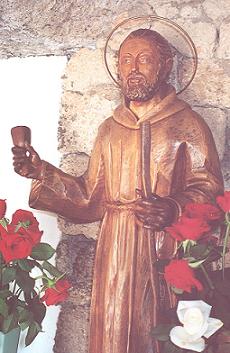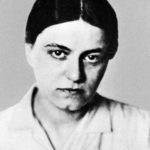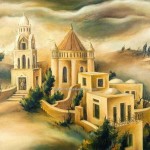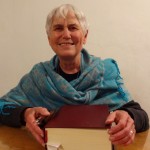
Saint of the Week:St. Pedro de San Jose Betancur
Support: Iwona Mazanek, fos
Feast day: 18th April
Patron of the Canary Islands and
Guatemala
Guatemala
Birth: 1626
Death: 1667
Beatified By: June 22, 1980 by Pope
John Paul II
John Paul II
Canonized By: July 30, 2002,
Guatemala City, Guatemala by Pope John Paul II
Guatemala City, Guatemala by Pope John Paul II
Brother Peter of
Saint Joseph Betancur
Saint Joseph Betancur
(March 21, 1626
(Tenerife) – April 25, 1667 (Antigua Guatemala), called Hermano Pedro de San
José Betancurt or more simply Hermano Pedro, Santo Hermano Pedro, or San Pedro
de Vilaflor, was a Spanish saint and missionary. He is known as the “St.
Francis of Assisi of the Americas”. It is the first saint native of the
Canary Islands, is also considered the first saint Guatemala and Central
America. Conducted a social work comparable to that done centuries later by
Mother Teresa in Calcutta, acting upon the most vulnerable and needy.
(Tenerife) – April 25, 1667 (Antigua Guatemala), called Hermano Pedro de San
José Betancurt or more simply Hermano Pedro, Santo Hermano Pedro, or San Pedro
de Vilaflor, was a Spanish saint and missionary. He is known as the “St.
Francis of Assisi of the Americas”. It is the first saint native of the
Canary Islands, is also considered the first saint Guatemala and Central
America. Conducted a social work comparable to that done centuries later by
Mother Teresa in Calcutta, acting upon the most vulnerable and needy.
Calling the new saint
an “outstanding example” of Christian mercy, the Holy Father noted that St.
Pedro practiced mercy “heroically with the lowliest and the most deprived.” Speaking
to the estimated 500,000 Guatemalans in attendance, the Holy Father spoke of
the social ills that plague the country today and of the need for change.
an “outstanding example” of Christian mercy, the Holy Father noted that St.
Pedro practiced mercy “heroically with the lowliest and the most deprived.” Speaking
to the estimated 500,000 Guatemalans in attendance, the Holy Father spoke of
the social ills that plague the country today and of the need for change.
“Let us think of the
children and young people who are homeless or deprived of an education; of abandoned
women with their many needs; of the hordes of social outcasts who live in the
cities; of the victims of organized crime, of prostitution or of drugs; of the
sick who are neglected and the elderly who live in loneliness,” he said in his
homily during the three-hour liturgy.
children and young people who are homeless or deprived of an education; of abandoned
women with their many needs; of the hordes of social outcasts who live in the
cities; of the victims of organized crime, of prostitution or of drugs; of the
sick who are neglected and the elderly who live in loneliness,” he said in his
homily during the three-hour liturgy.
Pedro very much
wanted to become a priest, but God had other plans for the young man born into
a poor family on Tenerife in the Canary Islands. Pedro was a shepherd until age
24, when he began to make his way to Guatemala, hoping to connect with a
relative engaged in government service there. By the time he reached Havana, he
was out of money. After working there to earn more, he got to Guatemala City
the following year. When he arrived he was so destitute that he joined the bread
line that the Franciscans had established.
wanted to become a priest, but God had other plans for the young man born into
a poor family on Tenerife in the Canary Islands. Pedro was a shepherd until age
24, when he began to make his way to Guatemala, hoping to connect with a
relative engaged in government service there. By the time he reached Havana, he
was out of money. After working there to earn more, he got to Guatemala City
the following year. When he arrived he was so destitute that he joined the bread
line that the Franciscans had established.
Soon, Pedro enrolled
in the local Jesuit college in hopes of studying for the priesthood. No matter
how hard he tried, however, he could not master the material; he withdrew from
school. In 1655 he joined the Secular Franciscan Order. Three years later he
opened a hospital for the convalescent poor; a shelter for the homeless and a
school for the poor soon followed. Not wanting to neglect the rich of Guatemala
City, Pedro began walking through their part of town ringing a bell and
inviting them to repent.
in the local Jesuit college in hopes of studying for the priesthood. No matter
how hard he tried, however, he could not master the material; he withdrew from
school. In 1655 he joined the Secular Franciscan Order. Three years later he
opened a hospital for the convalescent poor; a shelter for the homeless and a
school for the poor soon followed. Not wanting to neglect the rich of Guatemala
City, Pedro began walking through their part of town ringing a bell and
inviting them to repent.
Other men came to
share in Pedro’s work. Out of this group came the Bethlehemite Congregation,
which won papal approval after Pedro’s death. A Bethlehemite sisters’
community, similarly founded after Pedro’s death, was inspired by his life of
prayer and compassion.
share in Pedro’s work. Out of this group came the Bethlehemite Congregation,
which won papal approval after Pedro’s death. A Bethlehemite sisters’
community, similarly founded after Pedro’s death, was inspired by his life of
prayer and compassion.
He is sometimes
credited with originating the Christmas Eve posadas procession in which people
representing Mary and Joseph seek a night’s lodging from their neighbors. The
custom soon spread to Mexico and other Central American countries.
credited with originating the Christmas Eve posadas procession in which people
representing Mary and Joseph seek a night’s lodging from their neighbors. The
custom soon spread to Mexico and other Central American countries.
Speaking of Pedro and
the four others beatified with him in 1980, Pope John Paul II said: “God
lavished his kindness and his mercy on them, enriching them with his grace; he
loved them with a fatherly, but demanding, love, which promised only hardships
and suffering. He invited and called them to heroic holiness; he tore them away
from their countries of origin and sent them to other lands to proclaim the
message of the gospel, in the midst of inexpressible toil and difficulties”
(L’Osservatore Romano).
the four others beatified with him in 1980, Pope John Paul II said: “God
lavished his kindness and his mercy on them, enriching them with his grace; he
loved them with a fatherly, but demanding, love, which promised only hardships
and suffering. He invited and called them to heroic holiness; he tore them away
from their countries of origin and sent them to other lands to proclaim the
message of the gospel, in the midst of inexpressible toil and difficulties”
(L’Osservatore Romano).
As humans, we often
pride ourselves on our ability to reason. But, as Pedro’s life shows, other
skills may be an even more crucial element of our humanity than a clever mind:
compassion, imagination, love. Unable to master studies for the priesthood
despite his efforts, Pedro responded to the needs of homeless and sick people;
he provided education to the poor and salvation to the rich. He became holy—as
fully human as any of us can ever be.
pride ourselves on our ability to reason. But, as Pedro’s life shows, other
skills may be an even more crucial element of our humanity than a clever mind:
compassion, imagination, love. Unable to master studies for the priesthood
despite his efforts, Pedro responded to the needs of homeless and sick people;
he provided education to the poor and salvation to the rich. He became holy—as
fully human as any of us can ever be.






